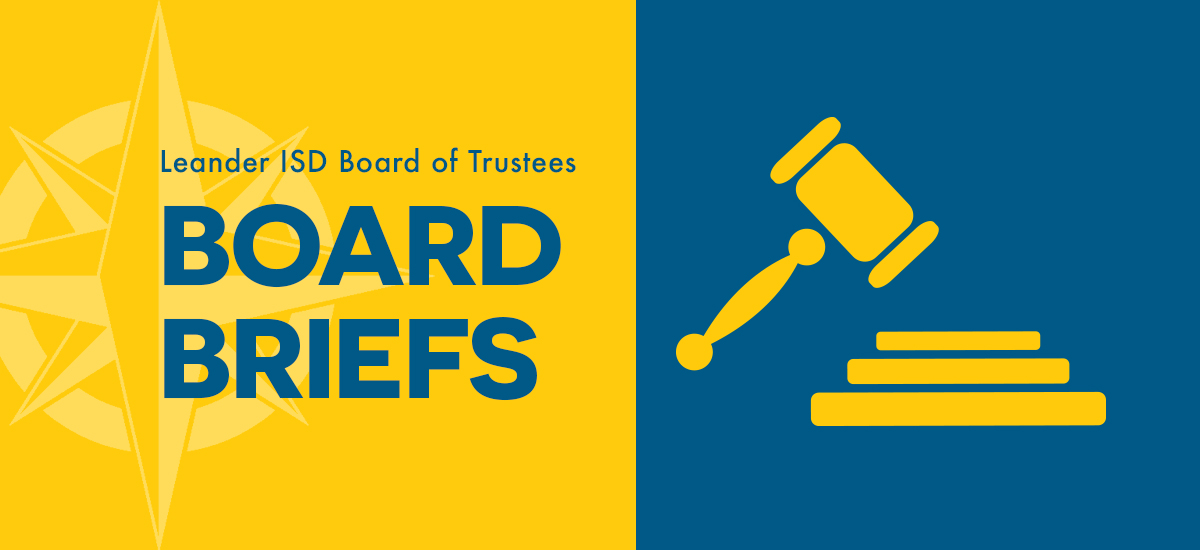Working to reduce the total cost of bond projects and to honor the recommendation from its citizen committee, Trustees considered cutting back the bond proposal from four years to three years during its Aug. 3 workshop.
The Board could vote to call a Nov. 2 election during their Aug. 5 regular meeting. View the agenda here and the video here. Our administration also released the planning document outlining projects by year and a resource document on Schools of Choice after the meeting ended.
Going from a four-year to a three-year cycle
The original recommendation from a 150-member Citizens Facility Advisory Committee (CFAC) included new schools needed to address enrollment growth, renovations to aging schools, and replacements to outdated technology covering four years. In order to reduce the overall cost of the potential bond, the Board turned its focus to a potential three-year bond cycle. Rather than cutting apart the recommendation and removing projects, Trustees explored a revised bond package without projects slated for the fourth year of the plan, pushing those to a second election, probably in 2024.
In addition, Trustees considered CFAC’s suggestion of allocating $41 million of bond project savings to help fund one of the recommended new elementary schools and fulfilling a commitment to voters from our 2007 bond program. Reducing the bond to three years and using the project savings to help fund one elementary school, reduced the bond from $933.4 million to $772.2 million.
“As our district continues to grow, the thoughtful consideration of these bond projects and timelines honors our taxpayers, families, students, and staff,” Board Secretary Elexis Grimes said. “The community members that have worked so diligently to outline the district’s essential needs reflect the commitment we make to being good stewards of taxpayer money while providing the very best educational spaces for our students.”
After passing a bond election in 2007, the district stretched funds for 10 years because enrollment growth slowed as a result of the housing market collapse. During that time, the Board reallocated project money intended for a new elementary school that wasn’t needed to pay for flex lab classrooms in high schools and secure front entrances in elementary schools.
Understanding the need for a bond election
Superintendent Bruce Gearing, Ed.D., presented the reasons for calling a bond election, including:
- 12,445 additional students expected over the next 10 years;
- need for nine total schools in 10 years;
- enrollment bounce back in 2021, including 2,000 additional students for the upcoming school year compared to the last;
- advisement from our financial advisor that we can afford up to $1 billion in bond projects thanks to growth and years of strong fiscal management; and
- community support, demonstrated by the committee process for the recommendation and a recent survey of likely voters.
School districts ask voters for the authority to borrow money to fund construction and renovation of schools, capital projects (such as replacing old HVAC systems or roofs), land, and technology. Because districts make debt payments using Interest and Sinking (I&S) tax collections, these funds are separate from funds used to pay teachers and staff. I&S tax rates are also not subject to the state’s school financial formula, meaning all collections stay with our local district. Using bond elections is the best way to keep up with growth and to take care of aging facilities without reducing our staffing and staff compensation budgets.
A majority of likely voters told us we need more classrooms to accommodate growth and that they would support a school bond election item recently recommended by a citizens’ committee to fund new schools, update aging facilities, and replace outdated technology.
What’s in the bond package
The $772.2 million, three-year bond package includes:
- four new schools (three elementary and one middle);
- renovations and major maintenance at 12 schools;
- additional classrooms for modernization at Cedar Park, Leander, and Vista Ridge high schools;
- replacements of old lighting and sound equipment, as well as old instruments for high school fine arts programs;
- new playground equipment and shade structures (when needed) at all elementary schools;
- new 18+ plus program building for students in special education qualifying for services after their 18th birthday;
- new building for New Hope High School, a school of choice program that allows students to self pace earning high school credits;
- an additional school of choice for high school students;
- technology infrastructure projects to improve quality and reliability of internet services; and
- new laptops and technology devices to replace old equipment used by students and teachers.
Financing the Bond
With careful consideration and consultation with our district financial advisors, Leander ISD is in a strong position to accommodate student enrollment growth and continue providing tremendous learning spaces for students. The district’s outstanding debt obligations have improved remarkably over the last five years thanks to the Board’s focus on reducing our reliance on capital appreciation bonds (CABs). By refinancing outstanding debt, carefully structuring new debt and taking advantage of early repayment options, the district has:
- Reduced overall CAB percentage from 75% to 36%
- Reduced total future principal & interest by $733 million while issuing $286 million in new bonds
- Has a current additional capacity of $1 billion
- Reduced repayment terms of all debt by 5 years
The bond election includes projects impacting all students and DOES NOT impact the tax rate, though rising property values could result in taxpayers paying more taxes in the coming years.
Five CFAC subcommittees, comprised of parents and community leaders, presented their recommendations to a 25-member steering committee in May. All of the meetings and materials are available online for the entire community to access. Trustees would need to call the election by Aug. 16 for the Nov. 2 ballot.


